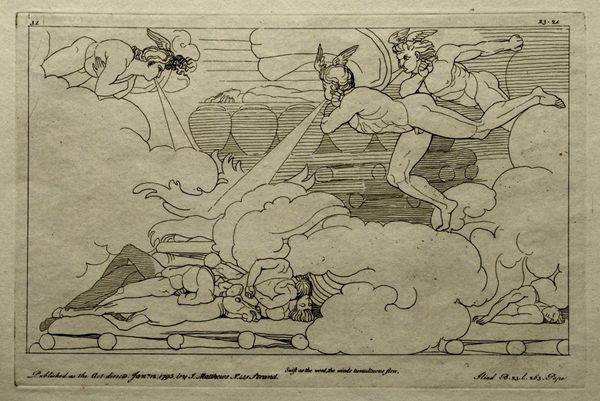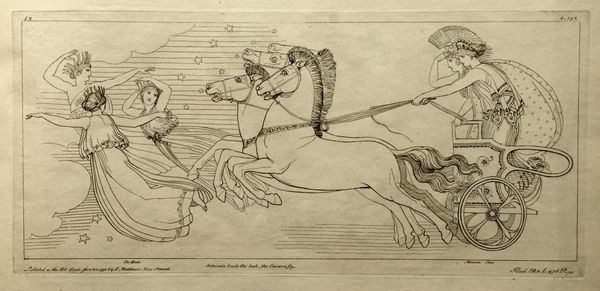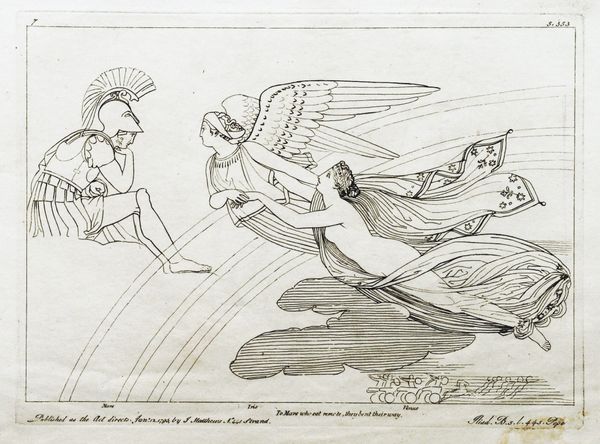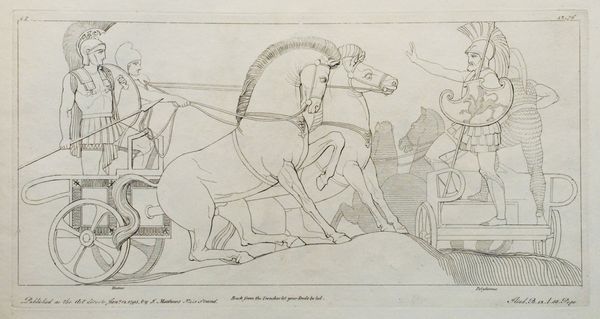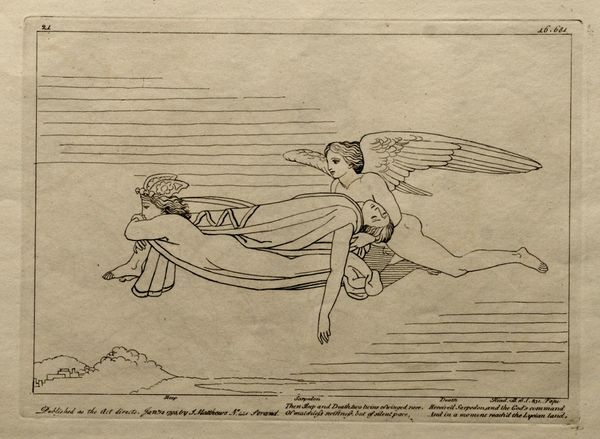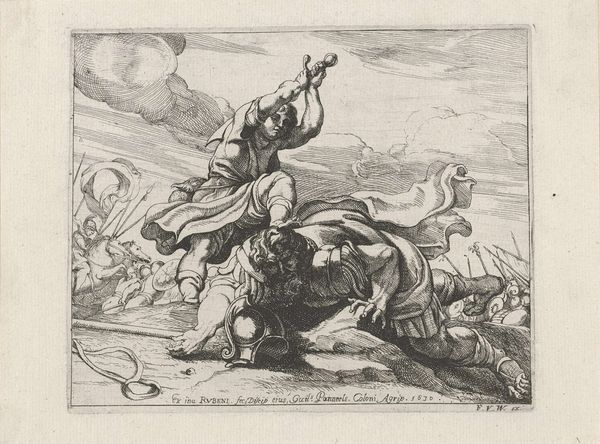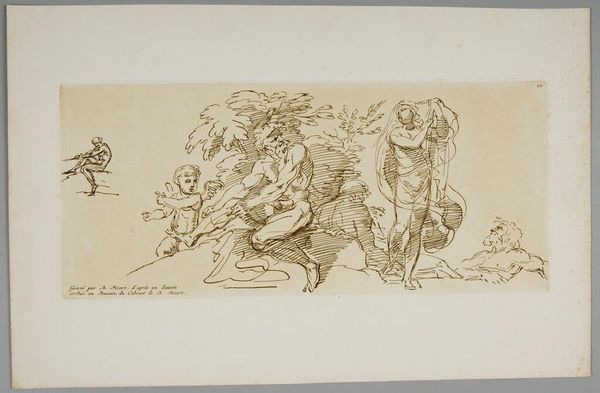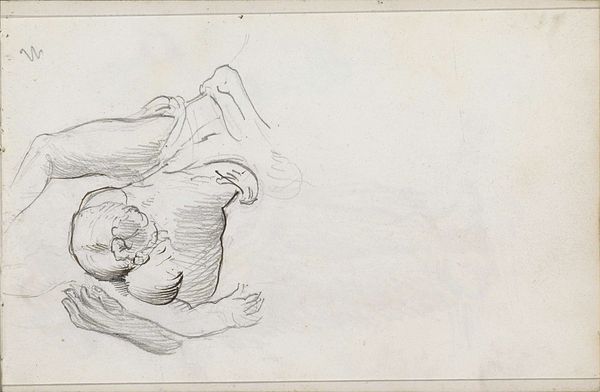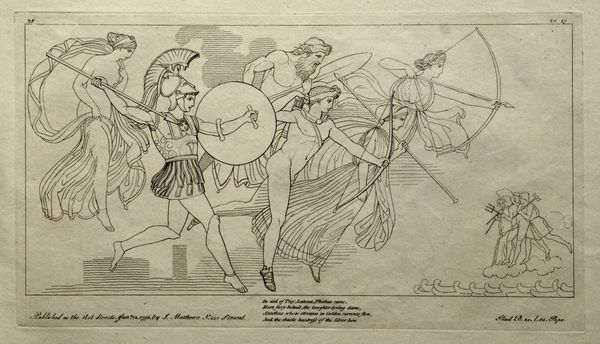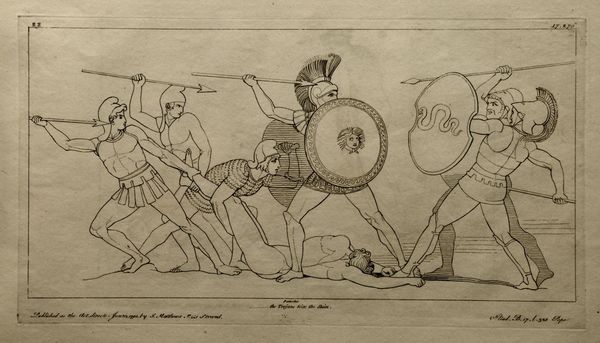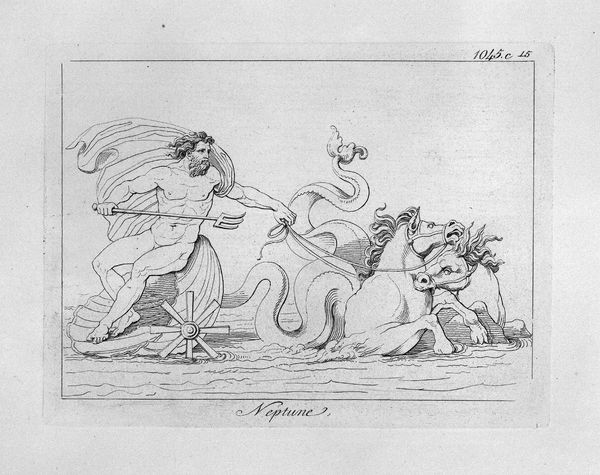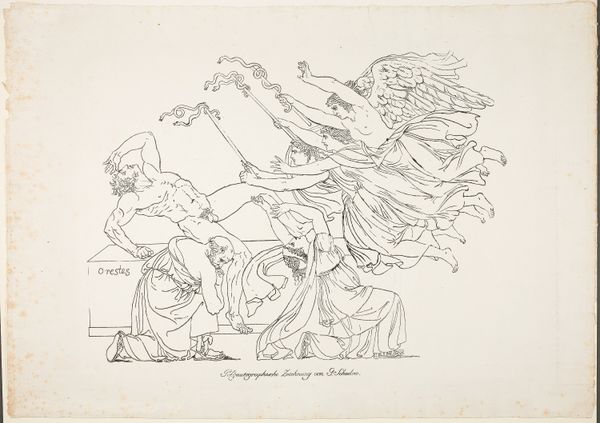
print, etching
#
neoclacissism
#
allegory
# print
#
etching
#
greek-and-roman-art
#
landscape
#
figuration
#
text
#
line
#
history-painting
Copyright: Public domain
Editor: This is John Flaxman's "Illustration to the Iliad" from 1795, created using etching. It feels incredibly simple, almost like a line drawing in a children’s book, yet there's something powerful in its starkness. What do you see in this piece? Curator: I'm drawn to the process itself. Consider the social context of etching in the late 18th century. It was a relatively accessible printmaking technique, allowing for wider distribution of images and ideas, even radical ones. Flaxman democratized the epic tradition through reproducible media. Notice how he uses line to define form – economical, yet descriptive. He isn't trying to create an illusionistic image. Editor: So, the accessibility of the etching process is key? Curator: Absolutely. It allowed Flaxman to disseminate this neoclassical aesthetic to a broader audience. It's a deliberate move away from the more opulent, exclusive forms of art favored by the aristocracy, but also towards a re-imagining of heroic production. Editor: That’s interesting. It challenges the idea of the "high art" object. Curator: Precisely. How does understanding the means of production and circulation alter your interpretation of its Neoclassical style? Editor: It makes it seem less about ideal beauty and more about...spreading ideas, like visual propaganda in a way. A brand of commodified aesthetics. Curator: An excellent point. It forces us to confront the consumption of classical imagery and how its meanings shift based on its material form and availability. Editor: I never thought about it that way before, considering the labor and process involved instead of just the image itself. Thanks! Curator: It opens up so much doesn't it! I learned something today, too!
Comments
No comments
Be the first to comment and join the conversation on the ultimate creative platform.
